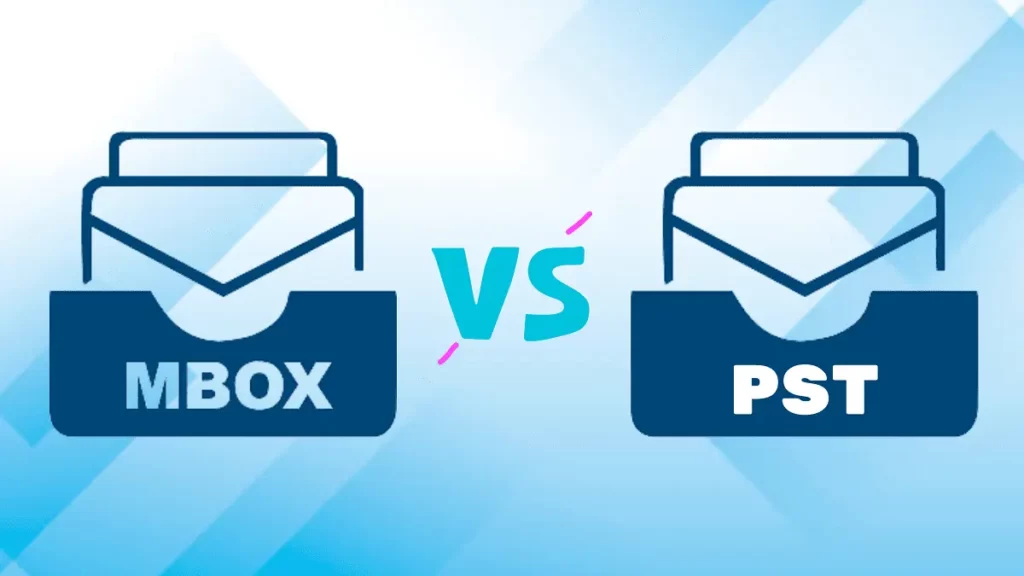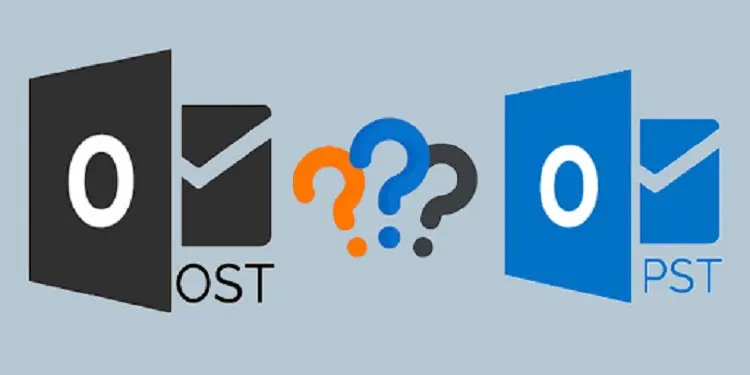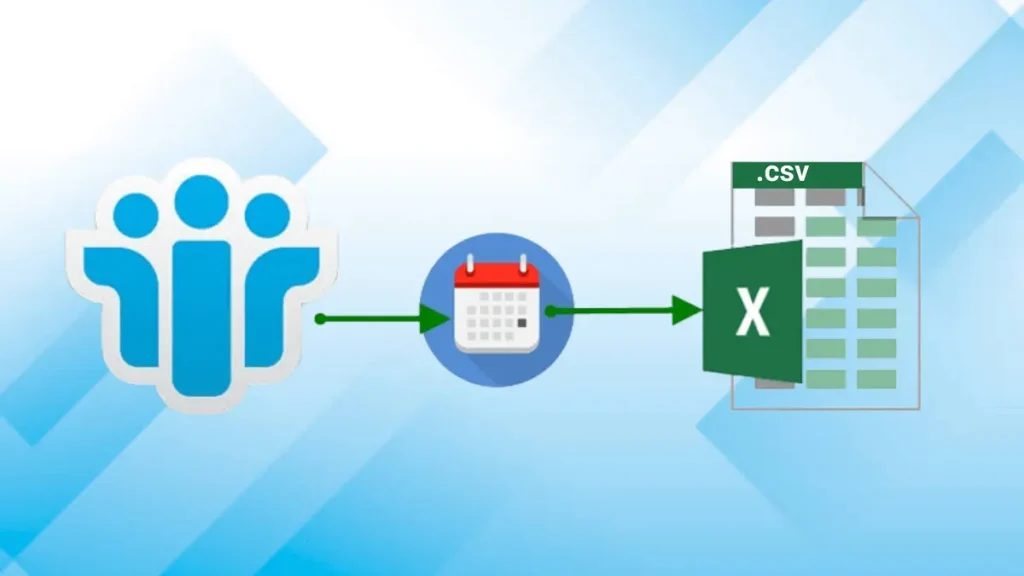Microsoft Outlook, a widely used email client, offers robust features for managing your inbox. But what happens when your email storage reaches its limit, or you want to archive older messages for safekeeping? This is where PST files come into play.
What is a PST File?
A PST file, standing for Personal Storage Table, is a file format used by Outlook to store email messages, contacts, calendars, tasks, and other data. It acts as a personal archive on your local computer, separate from your email server.
Benefits of Using PST Files
Local Backup
PST files provide a local copy of your emails, offering an extra layer of security in case of server issues.
Imagine your emails are like important documents. Normally, these documents are stored online on a server (like a filing cabinet in the cloud). A PST file is like making a copy of those documents and keeping them on your computer (like having a backup folder at home).
Why is this helpful? Sometimes, things go wrong with the server. Maybe it has technical problems or there’s an internet outage. This could mean you can’t access your emails for a while. But if you have a PST file with a local copy, you can still access your important messages even when the server is down. It’s like having a backup copy of your documents at home, so you can still refer to them even if the office filing cabinet is unavailable.
Think of it as an extra layer of security. It gives you peace of mind knowing you have a backup in case something happens to the server.
Archive Older Messages
Free up space in your main inbox by archiving less frequently accessed emails in PST files.
- Picture your inbox as a filing cabinet. It can only hold so much stuff before it gets cluttered and messy.
- Emails take up space, just like documents in a filing cabinet. The more emails you have, the fuller your inbox gets.
- A PST file acts like an offsite storage unit. You can move older emails, ones you don’t use often, to the PST file. This frees up space in your main inbox, making it less cluttered and easier to navigate.
- Think of it like this: You wouldn’t keep all your old tax documents or receipts in your everyday filing cabinet, right? You’d move them to a separate storage unit for safekeeping. It’s the same with emails. You can keep them safe in the PST file while decluttering your main inbox for the emails you use regularly.
Organize Your Data
Create separate PST files for different projects or categories, keeping your emails well-organized.
- Imagine your inbox as a big box. You throw everything in there – work emails, personal emails, receipts, project updates – it’s all mixed together.
- PST files act like labeled folders. You can create separate PST files for different categories, like “Work Emails,” “Personal Emails,” “2023 Client Projects,” or “Travel Planning.”
- This keeps your emails organized and easy to find. It’s like having separate folders in your big box for each category. No more digging through everything to find that specific work email from last year!
- Think of it like labeling your files. When you have everything clearly labeled, it’s much faster to find what you need. Separate PST files let you do the same thing with your emails, making them more organized and accessible.
Limitations of PST Files:
File Size Restrictions
PST files have size limitations, which can become an issue for users with extensive email history.
- Imagine a PST file as a giant suitcase. It can hold a lot of stuff, but there’s a limit to how much it can fit.
- PST files have a maximum size, depending on your version of Outlook. It’s like the suitcase eventually getting full and you can’t stuff any more clothes in.
- For people with tons of emails, this can be a problem. If your email history is huge, a single PST file might not be enough to hold everything.
- It’s like having a massive wardrobe and only one suitcase for travel. You’d have to pack and unpack multiple times, or leave some clothes behind. With PST files, you might need to create multiple files to store all your emails, which can be cumbersome to manage.
In short, PST files are great for backups and organization, but they can’t hold an infinite amount of emails. If you have a lot of emails, be aware of this limitation and consider alternative solutions for long-term storage.
Portability Considerations
PST files are not readily accessible from other devices unless manually transferred.
- Imagine your PST file as a box full of important documents. This box is great for keeping things organized at your desk (your main computer).
- The problem? If you want to access those documents from somewhere else, like a laptop or your phone, you can’t just magically see them. You’d have to physically move the box (transfer the PST file) to that other device.
- PST files aren’t automatically synced across devices. Unlike some email services where your messages appear on all your devices, PST files are standalone.
- To access them on another device, you’d need to manually transfer the PST file. This could involve copying it to a USB drive or uploading it to a cloud storage service. It’s an extra step compared to other options.
In short, PST files are great for local organization and backup, but they’re not ideal if you need to access your emails from multiple devices easily.
Single Point of Failure
Local storage on your computer means data loss if your hard drive fails. Consider backing up PST files to cloud storage for extra safety.
While PST files are great for local backups, they’re not perfect. Imagine your PST file is like a piggy bank where you keep important emails.
- The downside? If your computer’s hard drive crashes (like the piggy bank breaking), you could lose all the emails in the PST file. It’s a single point of failure, meaning all your eggs are in one basket.
- The solution? Back up your PST files to cloud storage. Think of cloud storage like a safe deposit box. Even if your computer breaks, your PST files (and emails) are safe and sound in the cloud. You can access them from any device with an internet connection.
In short, PST files are a good first step, but consider cloud storage for an extra layer of protection. It’s like having a backup plan for your backup!
Working with PST Files in Outlook
Creating a PST File
Explore how to create a new PST file within Outlook for dedicated archiving purposes.
Imagine you want to create a special folder in Outlook, just for storing old emails. This folder is called a PST file (Personal Storage Table).
We’ll show you how to make this PST file right inside Outlook. It’s easy, and it lets you dedicate this specific folder to archiving your older emails.
Think of it like creating a new box to store your old toys. You keep your new toys in your main room (your inbox), but the old ones go in a separate box (the PST file) to keep things organized.
Importing and Exporting Data
Learn how to import data from existing PST files or export specific messages/folders to a new PST file for organization.
Imagine you have two filing cabinets full of emails. PST files let you move things around between them:
- Importing is like bringing things into your current cabinet. Maybe you have an old PST file with emails you want to access easily. You can import that data (emails) into your current main Outlook inbox or another PST file you’re using.
- Exporting is like taking things out of your current cabinet and putting them in another one. Let’s say your inbox is getting cluttered with emails from a specific project. You can export those project emails to a new PST file, keeping your main inbox clean and organized.
Think of it as sorting your filing cabinets. You can bring things in (import) from other storage to consolidate information, or take things out (export) to create separate folders for better organization. This lets you keep your emails well-managed across different PST files.
Managing PST Files
Understand how to locate your PST files on your computer, set them as the default location for new emails, and manage multiple PST files within Outlook.
Imagine your PST files are like special folders on your computer where you store your emails.
Finding them: You’ll need to do some detective work to find where these PST files are stored on your computer. Luckily, Outlook can help you with this. We’ll show you how to search for them within the program.
There are two main ways to find the location of your PST files in Windows, depending on your Outlook version:
Method 1: Using Outlook (For Most Users)
This method works for most users and avoids diving into the registry. Here’s what to do:
- Open Microsoft Outlook.
- Click on the File tab.
- Go to Info and then select Account Settings.
- Click on Account Settings again from the pop-up window.
- Switch to the Data Files tab.
- You’ll see a list of your email accounts. Select the account associated with the PST file you’re looking for.
- Click the button Open File Location. This will open the folder where your PST file is stored in Windows Explorer.
Method 2: Using Registry Editor (For Advanced Users)
Warning: This method is for advanced users only. Editing the registry can be risky if done incorrectly. It’s recommended to proceed with caution and only if Method 1 fails.
- Press Windows Key + R to open the Run dialog box.
- Type regedit and press Enter. (Note: Editing the registry can be risky, so proceed with caution if needed)
- Navigate to the following location (you can copy and paste this path):
- For Windows Vista, Windows 7, 8, and 10: HKEY_CURRENT_USER\Software\Microsoft\Office\x.0\Outlook (Replace x.0 with your Outlook version number, like 16.0 for Outlook 2016)
- For Windows XP: HKEY_CURRENT_USER\Software\Microsoft\Office\x.0\Outlook (Replace x.0 with your Outlook version number)
- Look for a value named ForcePSTPath on the right-hand side.
- The data for this value will be the default location of your PST files.
Remember: It’s always a good idea to back up your data before making any changes to the registry. If you’re unsure about using the registry editor, it’s best to stick with Method 1 using Outlook.
Making them the boss: If you use a PST file regularly, you can set it as the default spot for new emails. This way, all your incoming messages will automatically go there instead of your main inbox.
Here’s how to set the default location for new emails in Outlook:
- Open Microsoft Outlook.
- Click on the File tab.
- Go to Info and then select Account Settings.
- Click on Account Settings again from the pop-up window.
- Switch to the Data Files tab.
- You’ll see a list of your email accounts. Select the account with the PST file you want to set as the default location.
- Click on the radio button next to Set as Default.
- Click OK to save the changes.
Now, all new emails received for that account will be saved in the selected PST file by default.
Additional Notes:
- Make sure the PST file you want to set as default already exists. You can’t create a new PST file through this method.
- If you have multiple PST files associated with the account, you can only set one as the default at a time.
- This method works for most Outlook versions. The specific menu options might vary slightly depending on your version.
“Similar blog: Differences Between OST and PST file“
Conclusion:
PST files are a great way to get a handle on your Outlook information. They act like a safety net, giving you a local copy of your emails in case something happens. They also help you declutter your inbox by letting you easily store older messages you don’t need right away.
Plus, you can create separate PST files for different projects or areas of your life, keeping things nice and organized. It’s important to remember though, that PST files aren’t perfect and shouldn’t be your only backup plan. By understanding both the upsides and downsides of PST files, you can use them to your advantage and keep your Outlook emails organized, safe, and easy to find.
Frequently Asked Questions:
Q. How do I open an archived PST file without Outlook?
A. To open an archive PST file you can also use a free PST file viewer tool. Shoviv Software provides a free utility for this task; you can easily preview your PST file content.
Q. What do I do if my PST file gets corrupted?
A. For minor corruption use Microsoft scanpst.exe for free utility, if it fails to repair your PST file then consider using the Shoviv Outlook PST repair tool for your highly corrupted PST files.




